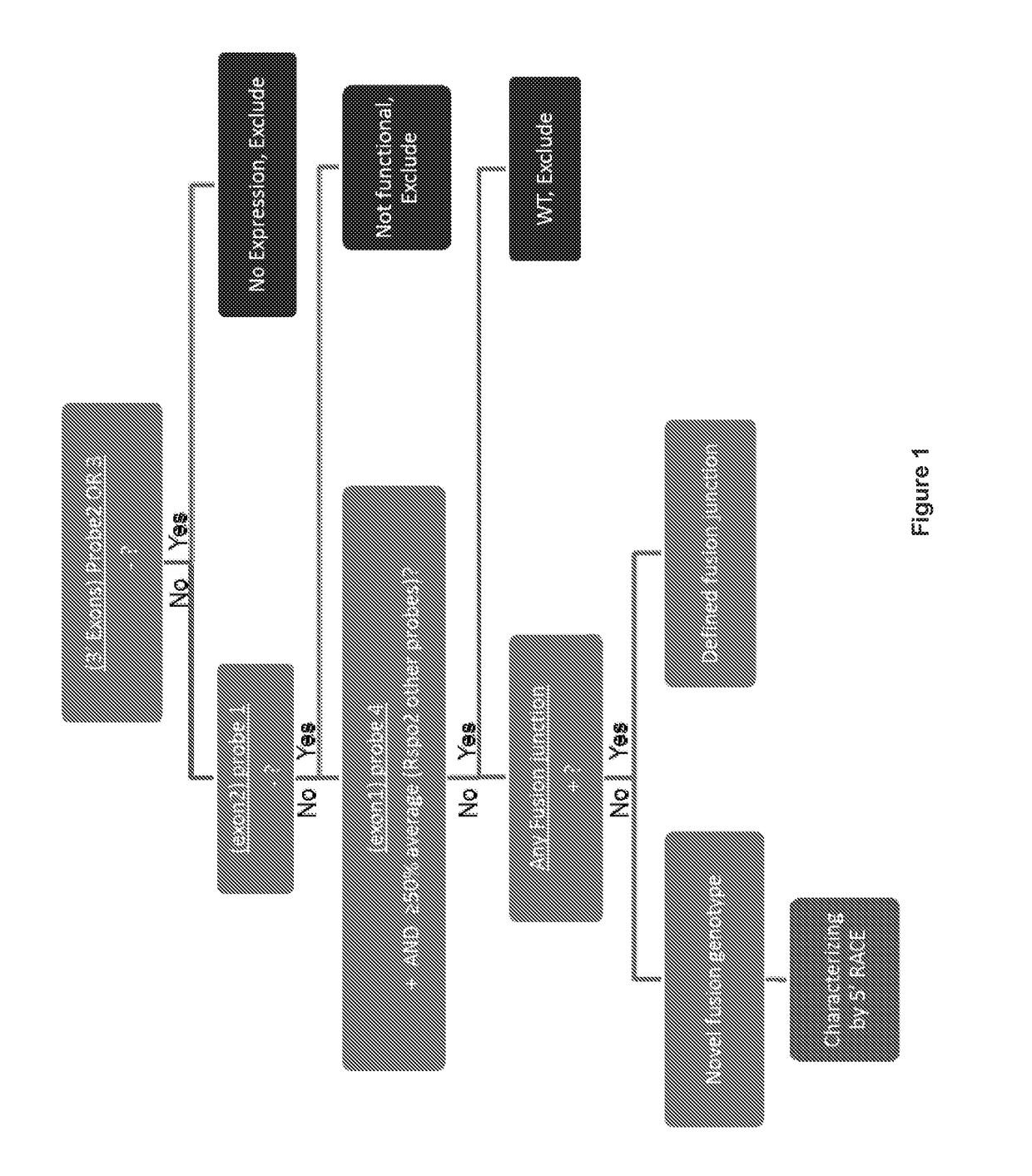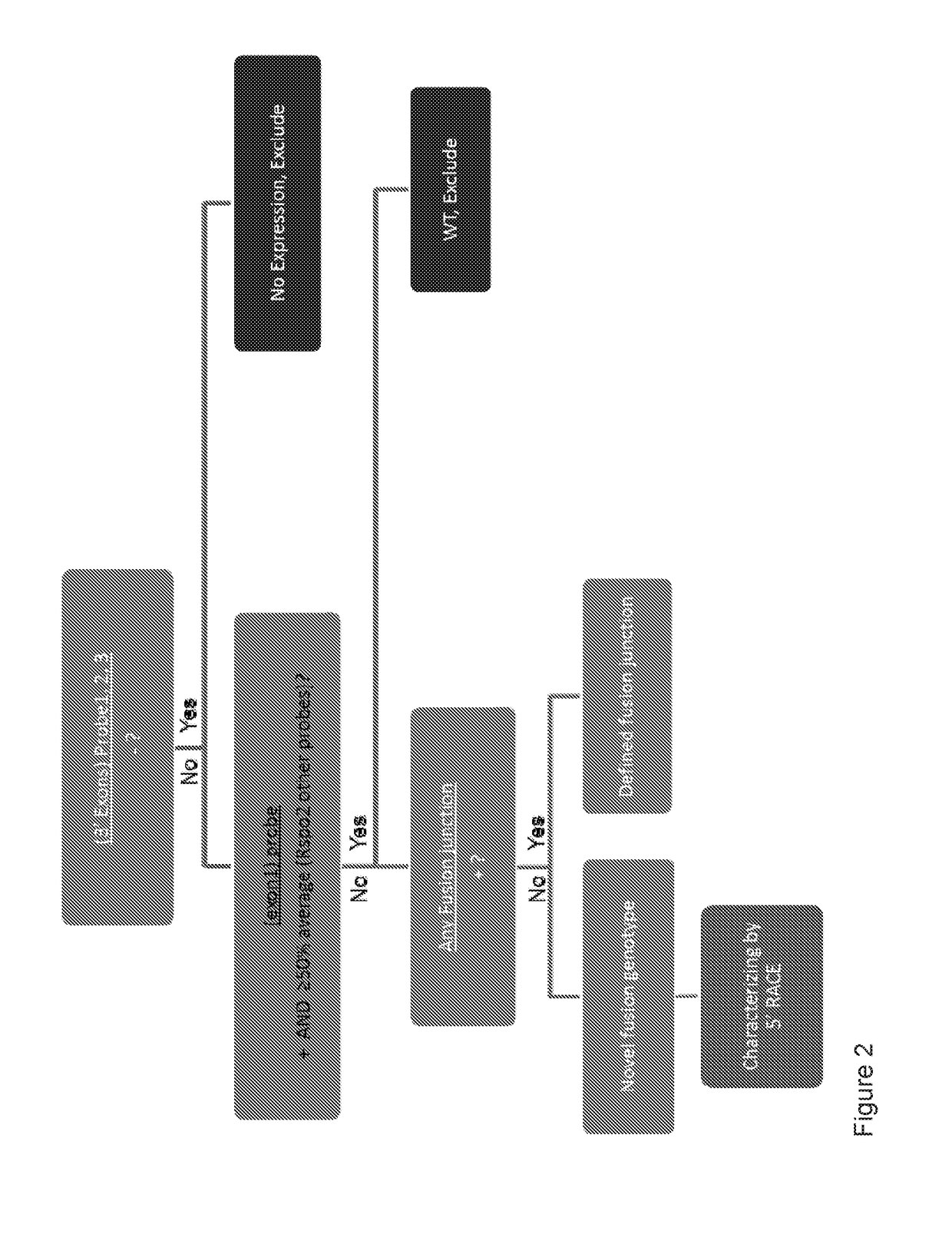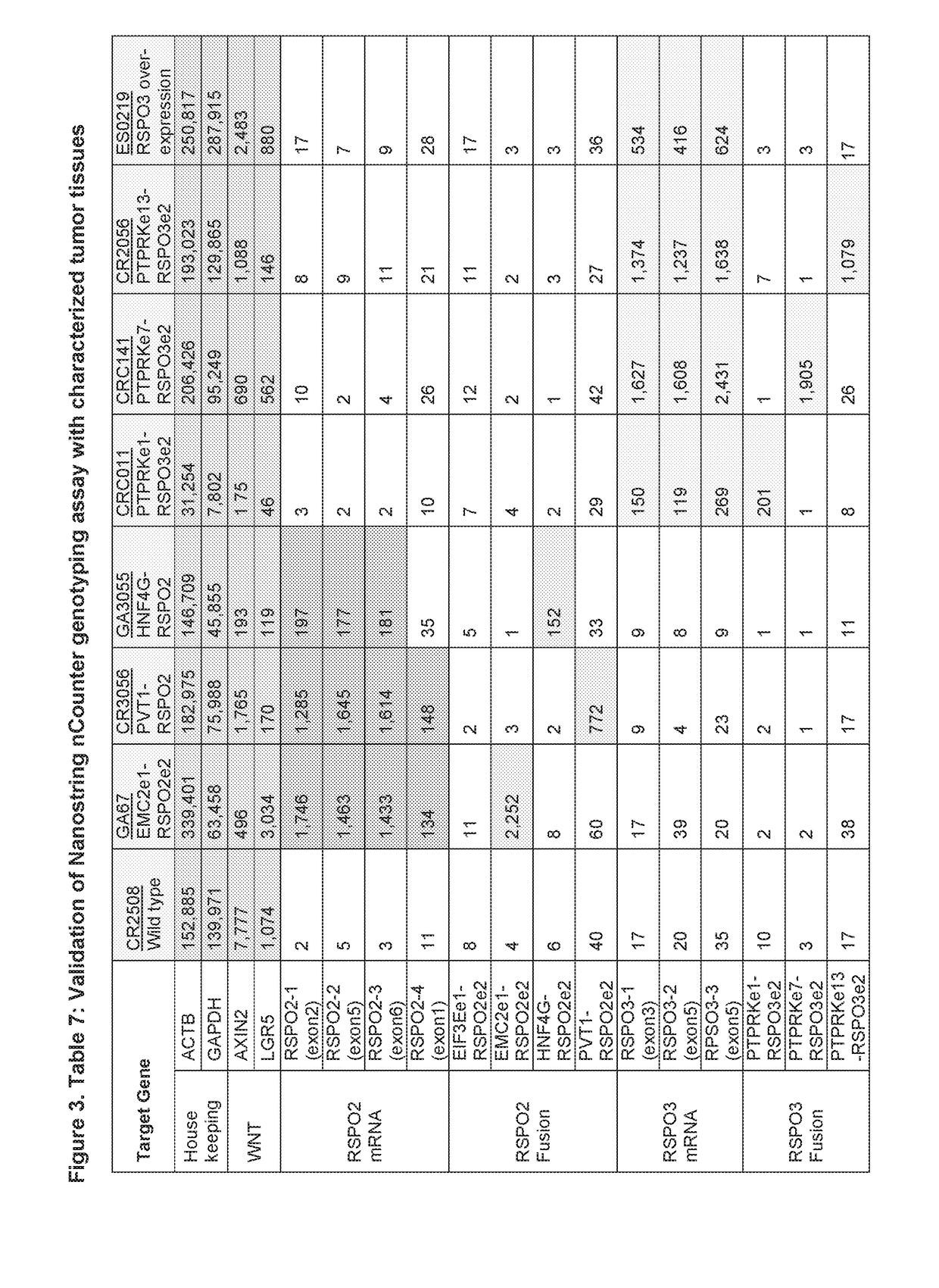Tumor biomarkers and use thereof
a biomarker and tumor technology, applied in the field of tumor biomarkers, can solve the problems of uncontrollable cell proliferation, undifferentiated cells, and inability to respond to the growth control signals of the body
- Summary
- Abstract
- Description
- Claims
- Application Information
AI Technical Summary
Benefits of technology
Problems solved by technology
Method used
Image
Examples
example 1
Synthesis of N-(4-(2-methylpyridin-4-yl)benzyl)-6-(2-methylpyridin-4-yl)-2,7-naphthyridin-1-amine (Compound No. 1)
[0602]
[0603]Step 1:
[0604]2-Cyanoacetamide (50 g, 601.8 mmol) and ethyl acetoacetate (75 mL, 601.8 mmol) were dissolved in MeOH. KOH (37.0 g, 1.1 eq) was dissolved in MeOH, and added dropwise into the mixture, some white solid came out. The mixture was heated up to reflex at oil bath for 8 h, and then cooled down to RT. The solid was filtered and then re-dissolved into hot water, and then filtered again. 6N HCl was added into the filtration to neutralize till pH<7. The white solid was out again and filtered. The solid was further washed with MeOH, water and MeOH, and then dried by vacuum to get the final product 3-ethynyl-4-methylpyridine-2,6-diol (yield ˜41%).
[0605]Step 2:
[0606]3-ethynyl-4-methylpyridine-2,6-diol (28.0 g, 195.2 mmol) was dissolved in POCl3 (60.0 mL). The reaction mixture was sealed in a pressure tube and heated up to 180° C. for 6 h. After the reaction w...
example 2
Synthesis of N-(3-methyl-4-(2-methylpyridin-4-yl)benzyl)-6-(2-methylpyridin-4-yl)-2,7-naphthyridin-1-amine (Compound No. 2)
[0623]
[0624]Step 1:
[0625]6-chloro-2,7-naphthyridin-1(2H)-one (200 mg, 1.10 mmol) and 2-methylpyridin-4-yl-4-boronic acid (227.60 mg, 1.66 mmol) were dissolved in BuOH (5.0 mL) and water (1.0 mL). K3PO4 (705.20 g, 3.32 mmol), Pd2(dba)3 (49.60 mg, 0.22 mmol) and S-phos (91.00 mg, 0.11 mmol) were added under N2. The reaction mixture in the pressure tube was heated up to 130° C. for 1 h. After cooling down the reaction to RT, poured the mixture into the water, extracted by EA for three times. The combined organic layer was washed with brine, dried over Na2SO4, concentrated under the vacuum to get the crude. The crude product was purified by column with 5% MeOH in DCM to get the final compound 6-(2-methylpyridin-4-yl)-2,7-naphthyridin-1(2H)-one (yield ˜61%). MS m / z 238.1 (M+1).
[0626]Step 2:
[0627]6-(2-methylpyridin-4-yl)-2,7-naphthyridin-1(2H)-one (150 mg, 0.63 mmol) ...
example 3
Synthesis of 6-(3-fluorophenyl)-N-((6-(2-methylpyridin-4-yl)pyridin-3-yl)methyl)isoquinolin-1-amine (Compound No. 3)
[0630]
[0631]Step 1:
[0632]6-bromoisoquinoline (1.80 g, 8.66 mmol) was dissolved n DCM (40 mL), after cooling down the reaction to 0° C. m-CPBA (2.30 g, 1.3 eq, 77% max) was added slowly in small portion. The reaction was warmed up to RT to become a kind of white suspension. In 4 hours, 100 mL DCM was added into the solution, and washed with saturated Na2CO3 solution, water and brine. The separated organic layer was dried over Na2SO4 and removed under the vacuum to get the yellow solid N-oxide 6-bromoisoquinoline without further purification (1.82 g, yield ˜93%).
[0633]Step 2:
[0634]N-oxide 6-bromoisoquinoline (1.82 g, 8.12 mmol) was dissolved in dry DCM (80 mL), POCl3 (1.12 ml, 1.5 eq) was added dropwise at RT. The reaction was heated to 45° C. for 2 hours. After cooling down the reaction to RT, DCM and excessive POCl3 were removed under the vacuum. The crude was re-disso...
PUM
| Property | Measurement | Unit |
|---|---|---|
| Mass | aaaaa | aaaaa |
| Mass | aaaaa | aaaaa |
| Electrical conductance | aaaaa | aaaaa |
Abstract
Description
Claims
Application Information
 Login to View More
Login to View More - R&D
- Intellectual Property
- Life Sciences
- Materials
- Tech Scout
- Unparalleled Data Quality
- Higher Quality Content
- 60% Fewer Hallucinations
Browse by: Latest US Patents, China's latest patents, Technical Efficacy Thesaurus, Application Domain, Technology Topic, Popular Technical Reports.
© 2025 PatSnap. All rights reserved.Legal|Privacy policy|Modern Slavery Act Transparency Statement|Sitemap|About US| Contact US: help@patsnap.com



